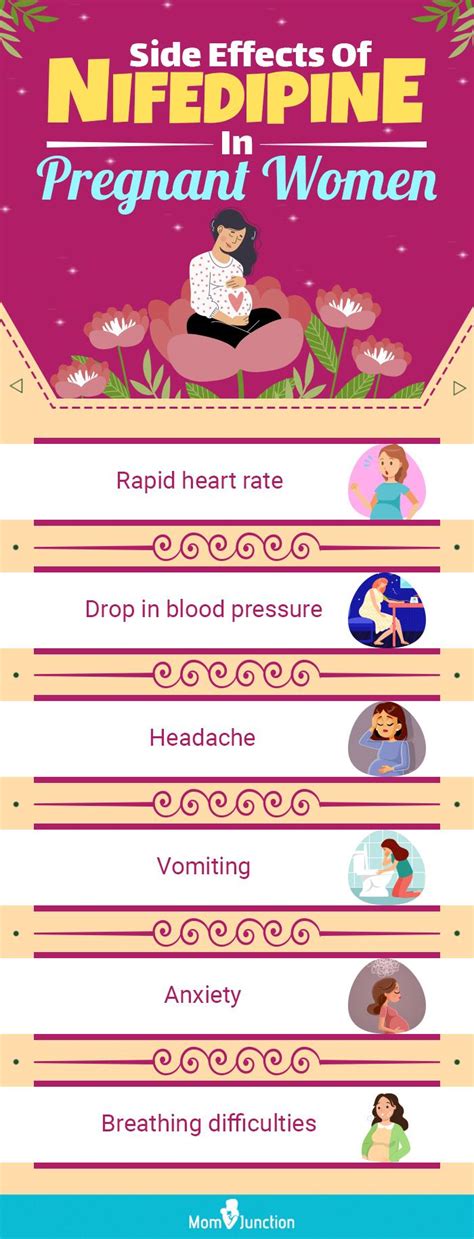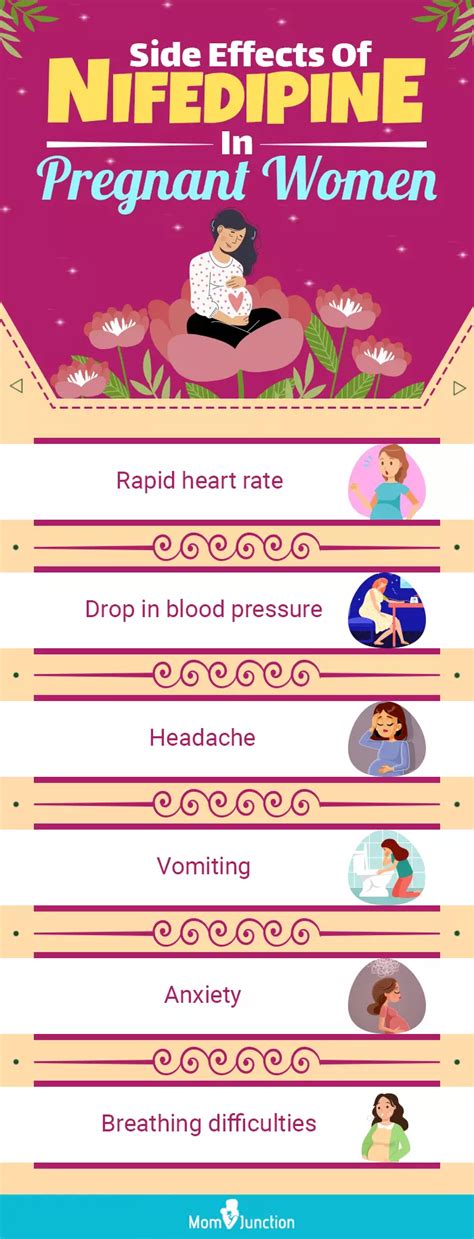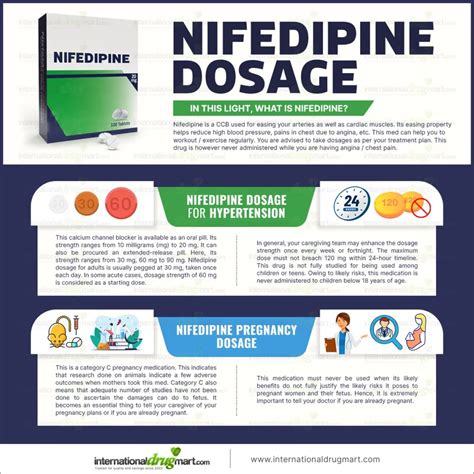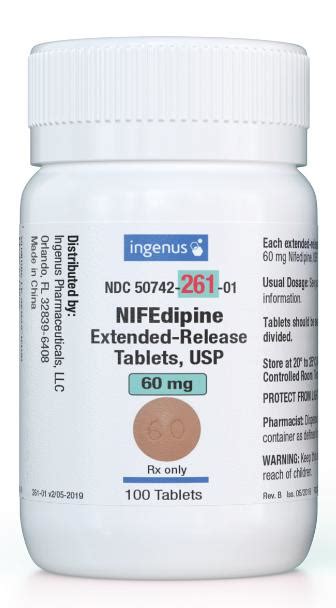Intro
Discover the potential Nifedipine side effects, including hypertension, edema, and dizziness, and learn about dosage, interactions, and warnings to minimize risks and ensure safe treatment for hypertension and angina management.
Nifedipine is a medication that belongs to a class of drugs known as calcium channel blockers. It is primarily used to treat high blood pressure and chest pain (angina). Nifedipine works by relaxing the muscles of the heart and blood vessels, which helps to improve blood flow and reduce blood pressure. While nifedipine is effective in managing these conditions, it can also cause a range of side effects. Understanding the potential side effects of nifedipine is crucial for patients who are taking or considering taking this medication.
The importance of being aware of the side effects of nifedipine cannot be overstated. Some side effects may be mild and temporary, while others can be more severe and require medical attention. By knowing what to expect, patients can better manage their condition and seek help if they experience any adverse reactions. Furthermore, being informed about the potential side effects of nifedipine can also help patients to make informed decisions about their treatment options. In this article, we will delve into the various side effects of nifedipine, their causes, and what patients can do to manage them.
The use of nifedipine has been widespread due to its effectiveness in treating high blood pressure and angina. However, like all medications, it is not without its risks. Patients who are taking nifedipine should be aware of the potential side effects and monitor their condition closely. This includes reporting any changes or concerns to their healthcare provider. By working closely with their healthcare provider, patients can minimize the risks associated with nifedipine and maximize its benefits. In the following sections, we will explore the different types of side effects that can occur with nifedipine, including common, less common, and rare side effects.
Nifedipine Side Effects Overview

Common Side Effects of Nifedipine
The most common side effects of nifedipine include: * Dizziness or lightheadedness * Headache * Nausea or vomiting * Fatigue or weakness * Swelling of the feet, ankles, and hands These side effects are usually mild and temporary, but they can be uncomfortable and affect daily activities. Patients who experience these side effects should talk to their healthcare provider about ways to manage them.Less Common Side Effects of Nifedipine

Rare but Serious Side Effects of Nifedipine
Rare but serious side effects of nifedipine include: * Allergic reactions, such as hives, itching, or difficulty breathing * Liver damage or liver failure * Increased risk of heart attack or stroke * Low blood pressure * Increased risk of bleeding or bruising These side effects are rare but can be life-threatening. Patients who experience any of these side effects should seek medical attention immediately.Managing Nifedipine Side Effects

Nifedipine Interactions
Nifedipine can interact with other medications, including: * Beta blockers, which can increase the risk of low blood pressure * Diuretics, which can increase the risk of dehydration * Grapefruit juice, which can increase the levels of nifedipine in the blood * Alcohol, which can increase the risk of dizziness and lightheadedness Patients who are taking nifedipine should inform their healthcare provider about all medications they are taking, including over-the-counter medications and supplements.Nifedipine and Pregnancy

Nifedipine and Breastfeeding
Nifedipine can pass into breast milk, and it is essential to weigh the benefits and risks. Nifedipine can help to manage high blood pressure, which is crucial for the health of the mother. However, nifedipine can also cause side effects in the baby, such as dizziness and lightheadedness. Patients who are breastfeeding or planning to breastfeed should talk to their healthcare provider about the risks and benefits of nifedipine.Nifedipine Dosage

Nifedipine Overdose
An overdose of nifedipine can cause severe side effects, including: * Low blood pressure * Rapid or irregular heartbeat * Shortness of breath * Confusion or disorientation * Coma or death Patients who suspect an overdose of nifedipine should seek medical attention immediately.Nifedipine Warnings

Nifedipine Precautions
Patients who are taking nifedipine should take several precautions, including: * Monitoring blood pressure regularly * Avoiding alcohol and grapefruit juice * Getting regular exercise to reduce swelling and improve circulation * Informing their healthcare provider about all medications they are takingWhat are the common side effects of nifedipine?
+The common side effects of nifedipine include dizziness, lightheadedness, headache, and nausea.
Can nifedipine cause allergic reactions?
+Yes, nifedipine can cause allergic reactions, such as hives, itching, or difficulty breathing.
Can nifedipine be used during pregnancy?
+Nifedipine can be used during pregnancy, but it is essential to weigh the benefits and risks.
In summary, nifedipine is a medication that can cause a range of side effects, from mild to severe. Patients who are taking nifedipine should be aware of the potential side effects and monitor their condition closely. By working closely with their healthcare provider, patients can minimize the risks associated with nifedipine and maximize its benefits. We invite you to share your experiences or ask questions about nifedipine side effects in the comments section below. Your input can help others who are taking this medication or considering it as a treatment option. Additionally, if you found this article informative, please share it with others who may benefit from this information.
